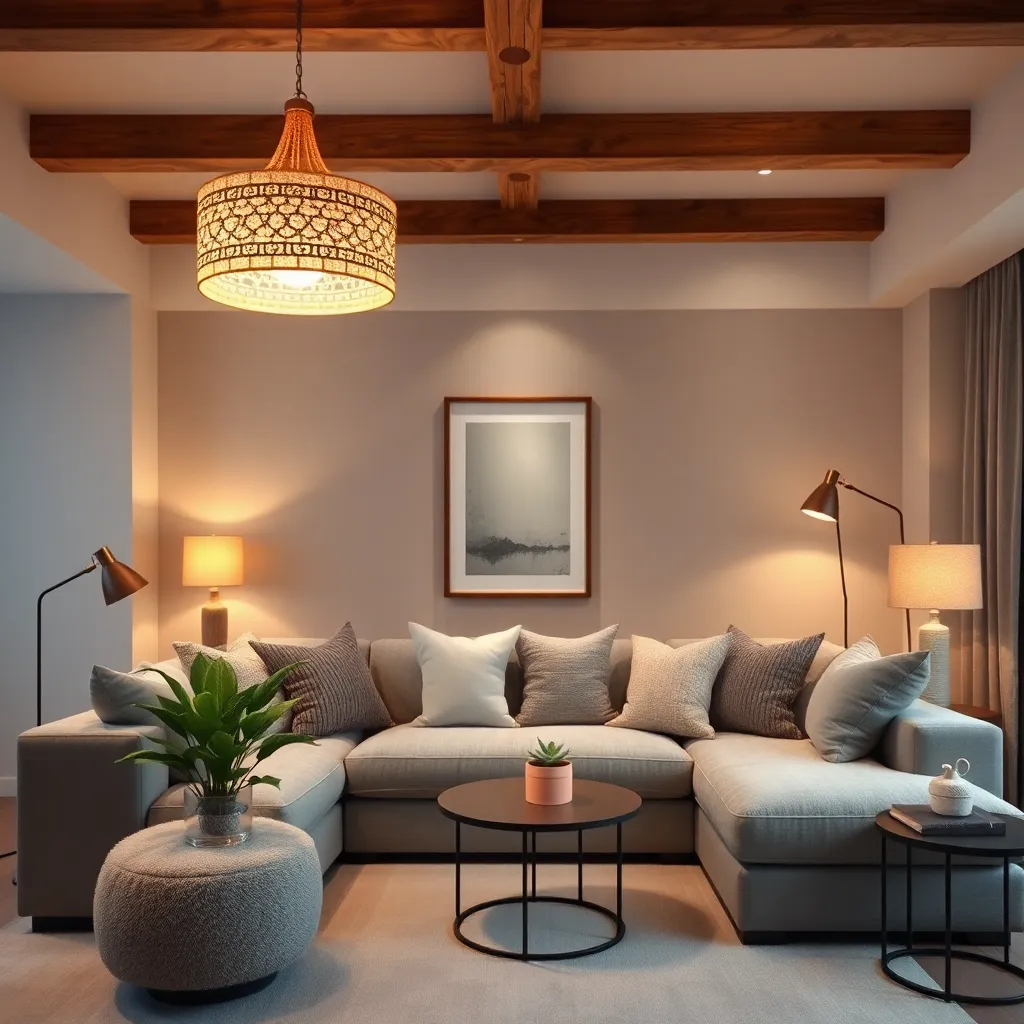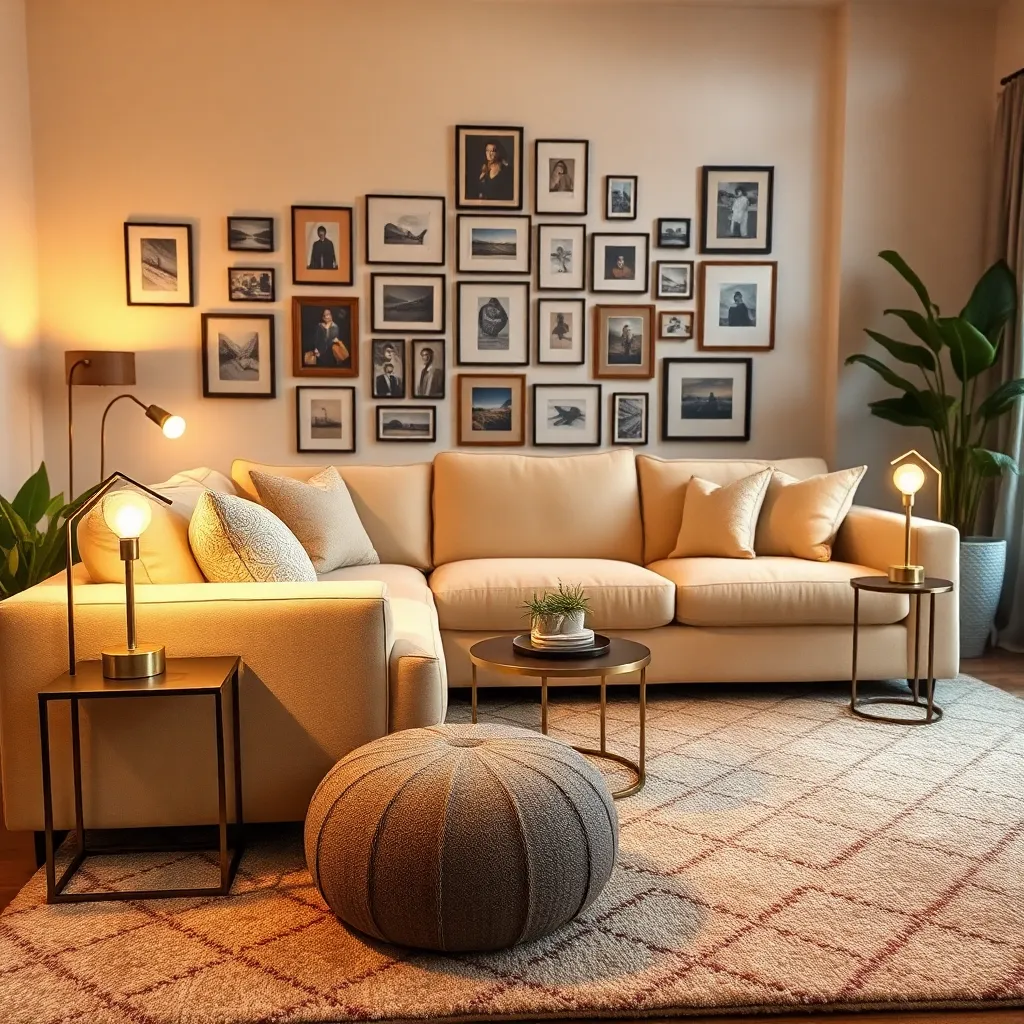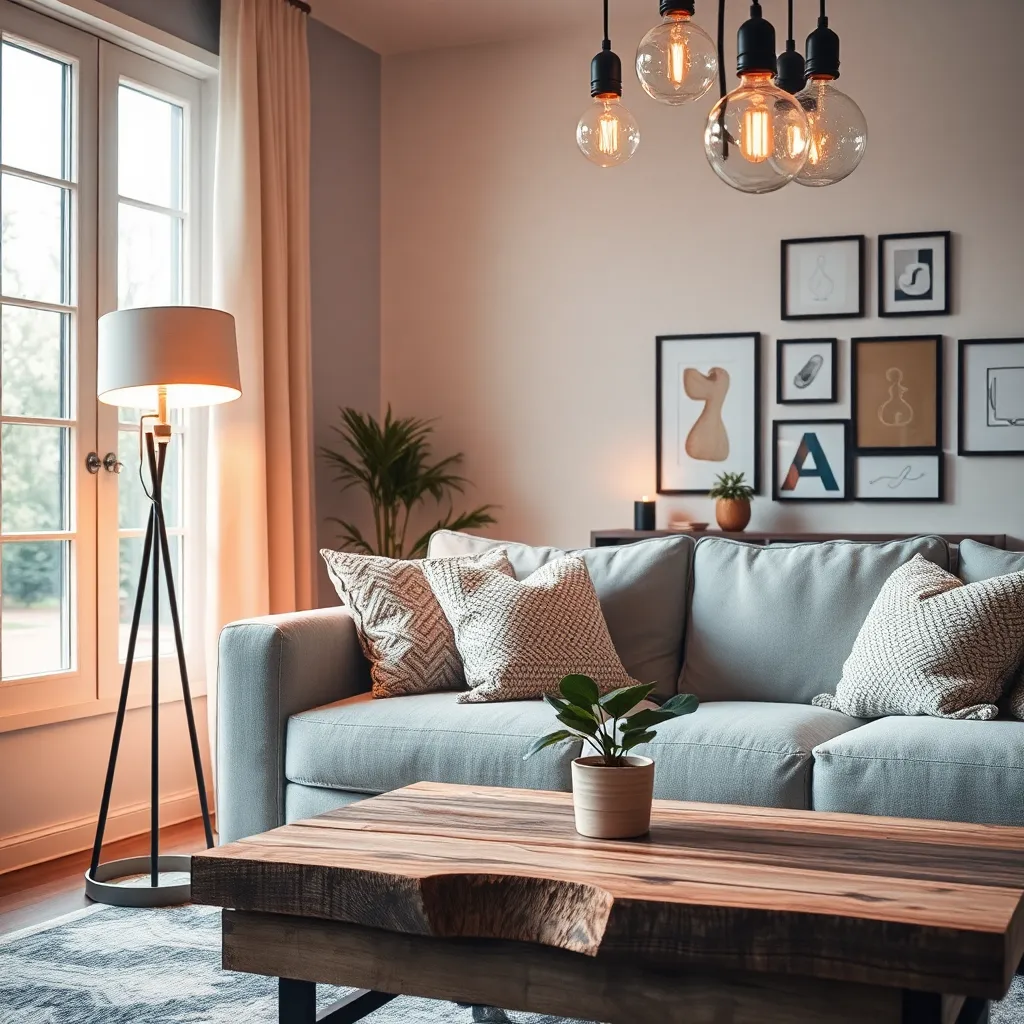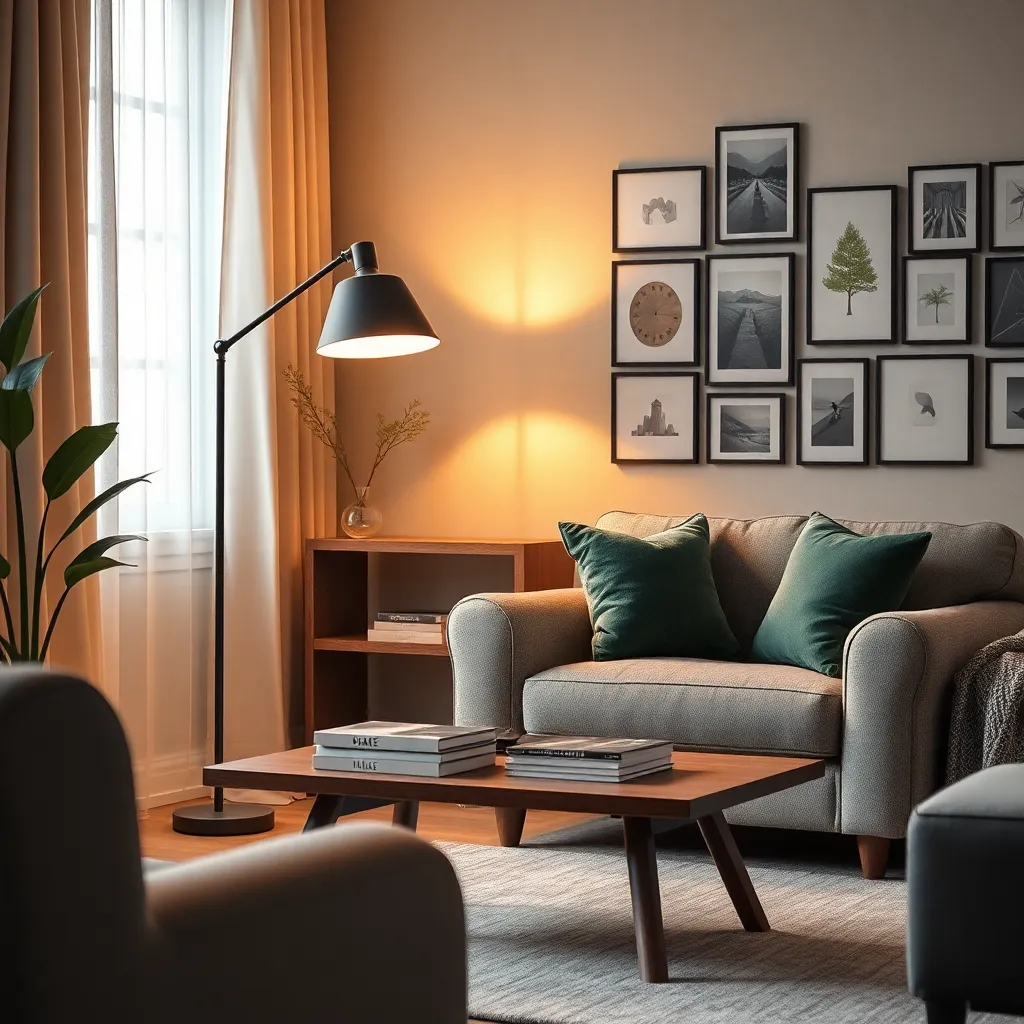Lighting is the unsung hero of interior design, transforming a room from ordinary to extraordinary with just the right touch. Whether you’re a novice stepping into the world of home styling or a seasoned decorator looking to refine your space, our guide to “6 Common Lighting Ideas For Home Interiors” is your key to illuminating success. These ideas are not just about brightness; they are about making your home feel welcoming, functional, and uniquely yours.
In this guide, you’ll discover practical lighting solutions that can elevate your home’s ambiance and functionality. Each technique is designed to be accessible and adaptable, ensuring that you can confidently apply them to any room, regardless of your current design expertise. Embrace the joy of seeing your home in a new light, literally and figuratively, as you explore how strategic lighting can enhance your living spaces. Let’s turn the spotlight on the transformative power of lighting and empower you to create a home that truly shines.
Layer Lighting for Depth

Layering lighting is an essential technique to add depth and ambiance to any room. By combining different types of lighting, such as ambient, task, and accent lights, you can create a dynamic and inviting atmosphere.
Start with ambient lighting, which forms the base layer and ensures overall illumination. Consider using ceiling fixtures like chandeliers or recessed lights to evenly distribute light across the room.
Next, incorporate task lighting to focus on specific activities or areas, such as reading or cooking. Table lamps or under-cabinet lights are great choices, providing direct light where you need it most.
Finally, use accent lighting to highlight architectural features or decorative elements, such as artwork or textured walls. Wall sconces or adjustable spotlights can add a touch of drama and draw attention to focal points, enhancing the room’s character.
Install Dimmer Switches Everywhere

Adding dimmer switches to your home is a versatile way to control the ambiance of your rooms. They allow you to adjust the lighting intensity to suit different activities, whether it’s a quiet evening reading or a lively dinner party.
Consider installing dimmer switches in every room, including unexpected places like bathrooms and hallways. This simple change can significantly enhance your home’s functionality and aesthetic, giving you control over the mood and atmosphere throughout the day.
For beginners, choose dimmers that are compatible with the bulbs in your home, such as LED-compatible dimmers for energy efficiency. Advanced decorators might explore smart dimmer switches that integrate with home automation systems, offering remote control through smartphones or voice commands.
When selecting dimmer switches, opt for styles and finishes that complement your existing decor, ensuring seamless integration. For a cohesive look, match the dimmer switch plates with other hardware in the room, such as door handles and light fixtures.
Use Pendant Lights in Kitchens

Pendant lights are a versatile choice that can completely transform your kitchen’s ambiance. They offer a perfect blend of functionality and style, making them a popular choice for modern and traditional kitchens alike.
When selecting pendant lights, consider the size and shape of your kitchen island or dining table. Opt for larger pendants if you have a spacious area, whereas smaller ones can be grouped for a dramatic effect in compact spaces.
Placement is key to maximizing the impact of pendant lighting. Hang them approximately 30 to 36 inches above the countertop to ensure the light is both functional and aesthetically pleasing.
To create a cohesive look, coordinate the material and finish of your pendant lights with existing kitchen hardware. For example, if your kitchen features stainless steel appliances, choose pendants with a metallic finish to tie the space together seamlessly.
Highlight Art with Spotlights

To create a stunning focal point in your home, consider using spotlights to highlight your artwork. These lights can direct attention to paintings, sculptures, or other art pieces, making them stand out in your interior design.
When selecting spotlights, choose fixtures that match the style of your room and provide adjustable beams. This flexibility allows you to tailor the lighting angle and intensity, ensuring your art is showcased in the best possible light.
Placement is crucial when installing spotlights; position them to avoid glare and shadows on your artwork. Ideally, spotlights should be placed at a 30-degree angle to the wall for optimal illumination and effect.
For more advanced techniques, consider using dimmable spotlights to adjust the mood and ambiance of your room. This feature allows you to create a soft, inviting atmosphere or a dramatic, gallery-like setting depending on the occasion.
Choose Energy-Efficient Bulbs

When transforming your home’s lighting, choosing energy-efficient bulbs is both environmentally responsible and cost-effective. LED bulbs are an excellent choice, offering durability and energy savings compared to traditional incandescent bulbs.
Consider the color temperature of your LED bulbs to suit different spaces in your home. For a cozy living room atmosphere, select warm white bulbs with a color temperature around 2700K, while cooler tones, like 5000K, work well in kitchens or workspaces for a bright, invigorating effect.
Placement of your energy-efficient bulbs can greatly enhance your interior design. Use dimmable LED options in areas where you want to adjust the mood, such as dining rooms or bedrooms, allowing for versatile lighting scenarios.
Advanced decorators might explore smart LED bulbs, which offer remote control and automation features. With smart lighting, you can easily change color schemes and intensity, creating dynamic environments that adapt to your daily routine.
Incorporate Floor Lamps for Ambiance

Floor lamps are a versatile lighting option that can dramatically enhance a room’s ambiance. They offer both practical illumination and a stylish design element, allowing you to experiment with different styles and materials. Consider using a floor lamp to brighten up dark corners while adding a touch of elegance. This can be particularly effective in living rooms or bedrooms where layered lighting is essential for creating depth.
When choosing a floor lamp, match its style to your existing decor to maintain a cohesive aesthetic. For modern interiors, opt for sleek metal designs, while rustic settings can benefit from wooden or woven lamps. Placement is key; position your floor lamp next to a reading chair or behind a sofa to create a cozy reading nook. This not only provides functional light but also enhances the room’s overall warmth.
For those looking to add a touch of luxury, consider a floor lamp with a dimmer switch. This allows you to adjust the light intensity, creating a soothing atmosphere for relaxation or a brighter setting for gatherings. Experiment with different bulb colors to change the mood of your space; warm-toned bulbs work well for creating a relaxing environment, while cool-toned bulbs are perfect for invigorating spaces.
Advanced decorators might explore floor lamps with adjustable arms or multiple light sources. These features offer flexibility in directing light exactly where it’s needed, making them ideal for multifunctional spaces. Incorporating floor lamps into your lighting scheme not only improves functionality but also adds a layer of sophistication to your home decor.
Conclusion: Growing Success with These Plants
In exploring the ‘6 Common Lighting Ideas For Home Interiors,’ we discovered how thoughtful lighting can mimic the dynamics of a healthy relationship: ambient lighting sets the mood, task lighting brings focus, accent lighting highlights special features, natural lighting breathes life into spaces, dimmers offer flexibility, and layered lighting creates depth and complexity. Just as lighting transforms a home, these concepts can enlighten and elevate your relationship dynamics.
To bring these insights into your relationship, consider starting with one actionable step today—perhaps enhancing your communication by focusing on a ‘task lighting’ approach: clear, direct, and purposeful conversations. By doing so, you illuminate understanding and strengthen your connection.
Remember, relationships thrive when nurtured with mindfulness and creativity. Bookmark this article to revisit these ideas and reinforce your understanding of how environmental factors can mirror personal interactions. As you take these steps, envision a future where your relationship glows with warmth and resilience, much like a beautifully lit home. Embrace this journey with confidence, knowing that the right ‘lighting’ can guide you towards enduring relationship success.
